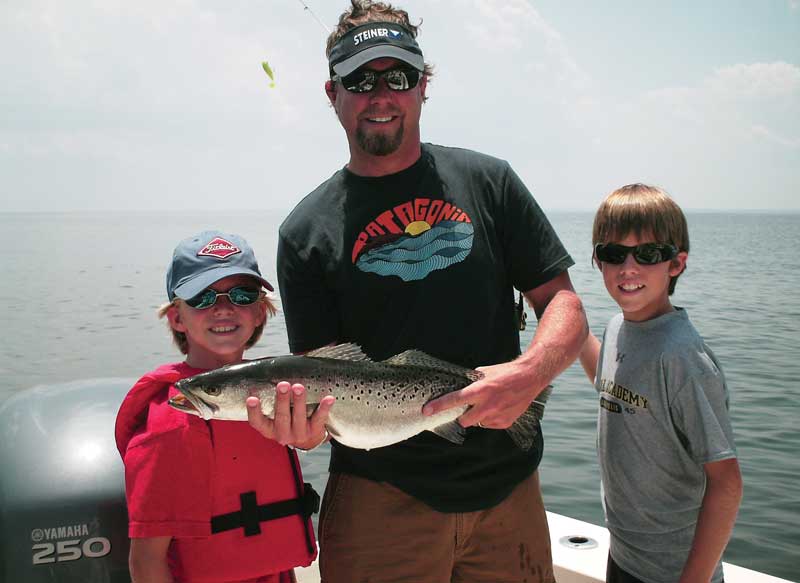Disappointing as the fishing news is, it shouldn’t come as a surprise to anyone who loves catching weakfish that stocks are depleted and have been for the past 13 years, according to the latest “Weakfish Benchmark Stock Assessment and Peer Review Report” released in May by the Atlantic States Marine Fisheries Commission (ASMFC) (2016).

Using new reference points, ASMFC scientists now consider the stock of weakfish, also called sea trout, to be depleted when a spawning stock biomass (SSB) falls below a threshold of 30 percent (15.17 million pounds). In 2014, the SSB was 5.62 million pounds. Commercial landings—the lion’s share being caught in North Carolina and Virginia, primarily with gillnets—have plunged from more than 19 million pounds in 1982 to approximately 200,000 pounds in 2014. The sport fishery has also sharply declined in that same timespan, from 11 million pounds to only 77,000 pounds. New Jersey, Delaware, Maryland, Virginia, and North Carolina anglers dominate the catch.
While weakfish may be depleted, they are not overfished, says the ASMFC. Both the recreational creel limit (one fish) as well as the commercial take (100-pound trip limit and 100-pound commercial bycatch limit) have been severely curtailed. So what has caused the weakfish decline? While there isn’t a “smoking gun,” some scientists attribute the severe decline in part to an increase in natural mortality—the rate at which fish die because of predation, disease, starvation. Biologists point to that factor as a significant contributor for a species that has declined steadily from the early 1980s to present day.
It could be that stripers and other apex predators (bluefish, tuna, and cobia) are consuming more juvenile sea trout because other forage, such as herring and menhaden, have dipped in the same time period.
What is the ASFMC doing about the problem? Though the ASMF declined to take additional action at its May meeting, it did direct its sea trout Technical Committee to produce a stock update in 2018, at which time the board will review the results and consider possible management action.
As an editorial aside, more spike trout were caught last season than the season before. Perhaps this “wait and see” strategy, combined with a more aggressive and focused ecosystem-based approach by the ASMFC to ensure there’s enough food for game fish to eat, might begin to help bring back this worthy gamefish.
To this point, in March the ASMFC awarded funding to a research team headed by Dr. John Whitehead of Appalachian State University and Dr. Jane Harrison from North Carolina Sea Grant to “conduct a socioeconomic study of Atlantic menhaden commercial fisheries intended to characterize the coastwide commercial fisheries, including bait and reduction sectors and the fishing communities they support.”
Though we might long for the halcyon days in the late 1990s into early 2000s, when Chesapeake and coastal fishermen enjoyed reliable catches of these tasty and sporty drum—double-rigged Meushaw feather jigs were the favorite lures used by this writer when tiderunner trout invaded the Bay Bridge pilings—there is some hope weakfish will make a rebound.
By Captain Chris D. Dollar